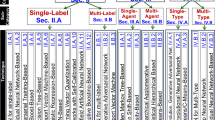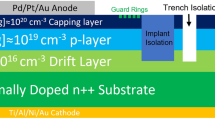Abstract
In the semiconductor manufacturing process, it is important to identify wafers on which faults have occurred or will occur to avoid unnecessary and costly further processing and physical inspections. This issue can be addressed by formulating the faulty wafer detection problem as a predictive modeling task, in which the process parameters/measurements and subsequent inspection results concerning the faults comprise the input and output variables at the wafer level, respectively. To achieve improved predictive performance, this paper presents a joint modeling method that incorporates classification and regression tasks into a single prediction model. Given the output variables in both binary and continuous forms, the prediction model simultaneously considers both the classification and regression tasks to complement each other, where each task predicts the binary and continuous output variables, respectively. The outputs from these two tasks are combined to predict whether a wafer is faulty. The entire model is implemented as a neural network, and is trained by optimizing a single objective function. The effectiveness of the model is demonstrated with a case study using real-world data from a semiconductor manufacturer.

Similar content being viewed by others
References
Abadi, M., Agarwal, A., Barham, P., Brevdo, E., Chen, Z., Citro, C., et al. (2016). TensorFlow: Large-scale machine learning on heterogeneous systems. In Proceedings of the 12th USENIX symposium on operating systems design and implementation (pp. 265–283).
Bai, Y., Sun, Z., Zeng, B., Long, J., Li, L., de Oliveira, J. V., et al. (2018). A comparison of dimension reduction techniques for support vector machine modeling of multi-parameter manufacturing quality prediction. Journal of Intelligent Manufacturing. https://doi.org/10.1007/s10845-017-1388-1.
Balaguer, B., Erinc, G., & Carpin S. (2012). Combining classification and regression for WiFi localization of heterogeneous robot teams in unknown environments. In Proceedings of the 2012 IEEE/RSJ international conference on intelligent robots and systems (pp. 3496–3503).
Baly, R., & Hajj, H. (2012). Wafer classification using support vector machines. IEEE Transactions on Semiconductor Manufacturing, 25(3), 373–383.
Bradley, A. P. (1997). The use of the area under the ROC curve in the evaluation of machine learning algorithms. Pattern Recognition, 30(7), 1145–1159.
Caruana, R. (1997). Multitask learning. Machine Learning, 28(1), 41–75.
Chang, C. Y., Li, C. H., Chang, Y. C., & Jeng, M. (2011). Wafer defect inspection by neural analysis of region features. Journal of Intelligent Manufacturing, 22(6), 953–964.
Chen, P., Wu, S., Lin, J., Ko, F., Lo, H., Wang, J., et al. (2005). Virtual metrology: A solution for wafer to wafer advanced process control. In Proceedings of the 2005 IEEE international symposium on semiconductor manufacturing (pp. 155–157).
Chien, C. F., & Chuang, S. C. (2014). A framework for root cause detection of sub-batch processing system for semiconductor manufacturing big data analytics. IEEE Transactions on Semiconductor Manufacturing, 27(4), 475–488.
Chien, C. F., Hsu, C. Y., & Chen, P. N. (2013). Semiconductor fault detection and classification for yield enhancement and manufacturing intelligence. Flexible Services and Manufacturing Journal, 25(3), 367–388.
Chien, C. F., Liu, C. W., & Chuang, S. C. (2017). Analysing semiconductor manufacturing big data for root cause detection of excursion for yield enhancement. International Journal of Production Research, 55(17), 5095–5107.
Chien, C. F., Wang, W. C., & Cheng, J. C. (2007). Data mining for yield enhancement in semiconductor manufacturing and an empirical study. Expert Systems with Applications, 33(1), 192–198.
García, V., Sánchez, J. S., Rodríguez-Picón, L. A., Méndez-González, L. C., & de Jesús Ochoa-Domínguez, H. (2018). Using regression models for predicting the product quality in a tubing extrusion process. Journal of Intelligent Manufacturing. https://doi.org/10.1007/s10845-018-1418-7.
Glocker, B., Pauly, O., Konukoglu, E., & Criminisi, A. (2012). Joint classification-regression forests for spatially structured multi-object segmentation. In Proceedings of the 2012 European conference on computer vision (pp. 870–881). Springer.
He, H., & Garcia, E. A. (2009). Learning from imbalanced data. IEEE Transactions on Knowledge & Data Engineering, 21(9), 1263–1284.
He, Q. P., & Wang, J. (2007). Fault detection using the k-nearest neighbor rule for semiconductor manufacturing processes. IEEE Transactions on Semiconductor Manufacturing, 20(4), 345–354.
He, S. G., He, Z., & Wang, G. A. (2013). Online monitoring and fault identification of mean shifts in bivariate processes using decision tree learning techniques. Journal of Intelligent Manufacturing, 24(1), 25–34.
Hervás, C., Gutierrez, P. A., Silva, M., & Serrano, J. M. (2007). Combining classification and regression approaches for the quantification of highly overlapping capillary electrophoresis peaks by using evolutionary sigmoidal and product unit neural networks. Journal of Chemometrics, 21(12), 567–577.
Hsu, C. C., & Chen, M. S. (2016). Intelligent maintenance prediction system for LED wafer testing machine. Journal of Intelligent Manufacturing, 27(2), 335–342.
Huang, J., & Ling, C. X. (2005). Using AUC and accuracy in evaluating learning algorithms. IEEE Transactions on Knowledge and Data Engineering, 17(3), 299–310.
Huang, S. H., & Pan, Y. C. (2015). Automated visual inspection in the semiconductor industry: A survey. Computers in Industry, 66, 1–10.
Japkowicz, N., & Stephen, S. (2002). The class imbalance problem: A systematic study. Intelligent Data Analysis, 6(5), 429–449.
Joshi, K. D., Chauhan, V., & Surgenor, B. (2018). A flexible machine vision system for small part inspection based on a hybrid SVM/ANN approach. Journal of Intelligent Manufacturing. https://doi.org/10.1007/s10845-018-1438-3.
Kang, S. (2018). On effectiveness of transfer learning approach for neural network-based virtual metrology modeling. IEEE Transactions on Semiconductor Manufacturing, 31(1), 149–155.
Kang, S., & Kang, P. (2018). Locally linear ensemble for regression. Information Sciences, 432, 199–209.
Khan, A. A., Moyne, J. R., & Tilbury, D. M. (2007). An approach for factory-wide control utilizing virtual metrology. IEEE Transactions on Semiconductor Manufacturing, 20(4), 364–375.
Kim, D., Kang, P., Cho, S., joo Lee, H., & Doh, S. (2012). Machine learning-based novelty detection for faulty wafer detection in semiconductor manufacturing. Expert Systems with Applications, 39(4), 4075–4083.
Kingma, D. P., & Ba, J. (2015). Adam: A method for stochastic optimization. In Proceedings of the 3rd international conference on learning representations.
Kumar, N., Kennedy, K., Gildersleeve, K., Abelson, R., Mastrangelo, C. M., & Montgomery, D. C. (2006). A review of yield modelling techniques for semiconductor manufacturing. International Journal of Production Research, 44(23), 5019–5036.
Kyeong, K., & Kim, H. (2018). Classification of mixed-type defect patterns in wafer bin maps using convolutional neural networks. IEEE Transactions on Semiconductor Manufacturing, 31(3), 395–402. https://doi.org/10.1109/TSM.2018.2841416.
LeCun, Y., Bengio, Y., & Hinton, G. (2015). Deep learning. Nature, 521(7553), 436–444.
Lee, K. B., & Kim, C. O. (2018). Recurrent feature-incorporated convolutional neural network for virtual metrology of the chemical mechanical planarization process. Journal of Intelligent Manufacturing. https://doi.org/10.1007/s10845-018-1437-4.
Li, C., Sanchez, R. V., Zurita, G., Cerrada, M., Cabrera, D., & Vásquez, R. E. (2015). Multimodal deep support vector classification with homologous features and its application to gearbox fault diagnosis. Neurocomputing, 168, 119–127.
Li, D. C., Chen, W. C., Liu, C. W., & Lin, Y. S. (2012). A non-linear quality improvement model using SVR for manufacturing TFT-LCDs. Journal of Intelligent Manufacturing, 23(3), 835–844.
Li, Y., Lan, C., Xing, J., Zeng, W., Yuan, C., & Liu, J. (2016). Online human action detection using joint classification-regression recurrent neural networks. In Proceedings of the 2016 European conference on computer vision (pp. 203–220). Springer.
Liu, L., Tian, S., Xue, D., Zhang, T., & Chen, Y. (2018). Industrial feedforward control technology: A review. Journal of Intelligent Manufacturing. https://doi.org/10.1007/s10845-018-1399-6.
Miao, Q., Zhang, X., Liu, Z., & Zhang, H. (2017). Condition multi-classification and evaluation of system degradation process using an improved support vector machine. Microelectronics Reliability, 75, 223–232.
Moyne, J., Samantaray, J., & Armacost, M. (2016). Big data capabilities applied to semiconductor manufacturing advanced process control. IEEE Transactions on Semiconductor Manufacturing, 29(4), p283–291.
Pan, J. C. H., & Tai, D. H. E. (2011). A new strategy for defect inspection by the virtual inspection in semiconductor wafer fabrication. Computers & Industrial Engineering, 60(1), 16–24.
Park, C., Kim, Y., Park, Y., & Kim, S. B. (2018). Multitask learning for virtual metrology in semiconductor manufacturing systems. Computers & Industrial Engineering, 123, 209–219.
Pedregosa, F., Varoquaux, G., Gramfort, A., Michel, V., Thirion, B., Grisel, O., et al. (2011). Scikit-learn: Machine learning in Python. Journal of Machine Learning Research, 12, 2825–2830.
Plastino, A., Gonçalves, E. C., da Silva, P. N., Carneiro, G., & de Vasconcellos Azeredo, R. B. (2017). Combining classification and regression for improving permeability estimations from 1H NMR relaxation data. Journal of Applied Geophysics, 146, 95–102.
Schmidhuber, J. (2015). Deep learning in neural networks: An overview. Neural Networks, 61, 85–117.
Schulter, S., Leistner, C., Wohlhart, P., Roth, P. M., & Bischof, H. (2014). Accurate object detection with joint classification-regression random forests. In Proceedings of the 2014 IEEE conference on computer vision and pattern recognition (pp. 923–930).
Seera, M., Lim, C. P., & Loo, C. K. (2016). Motor fault detection and diagnosis using a hybrid FMM-CART model with online learning. Journal of Intelligent Manufacturing, 27(6), 1273–1285.
Shin, C. K., & Park, S. C. (2000). A machine learning approach to yield management in semiconductor manufacturing. International Journal of Production Research, 38(17), 4261–4271.
Srivastava, N., Hinton, G., Krizhevsky, A., Sutskever, I., & Salakhutdinov, R. (2014). Dropout: A simple way to prevent neural networks from overfitting. Journal of Machine Learning Research, 15, 1929–1958.
Su, A. J., Jeng, J. C., Huang, H. P., Yu, C. C., Hung, S. Y., & Chao, C. K. (2007). Control relevant issues in semiconductor manufacturing: Overview with some new results. Control Engineering Practice, 15(10), 1268–1279.
Tong, L. I., & Chao, L. C. (2008). Novel yield model for integrated circuits with clustered defects. Expert Systems with Applications, 34(4), 2334–2341.
Uzsoy, R., Lee, C. Y., & Martin-Vega, L. A. (1992). A review of production planning and scheduling models in the semiconductor industry part I: System characteristics, performance evaluation and production planning. IIE Transactions, 24(4), 47–60.
van Heerden, C., Barnard, E., Davel, M., van der Walt, C., van Dyk, E., Feld, M., et al. (2010). Combining regression and classification methods for improving automatic speaker age recognition. In Proceedings of the 2010 IEEE international conference on acoustics, speech and signal processing (pp. 5174–5177).
Wolpert, D. H. (1996). The lack of a priori distinctions between learning algorithms. Neural Computation, 8(7), 1341–1390.
Wu, L., & Zhang, J. (2010). Fuzzy neural network based yield prediction model for semiconductor manufacturing system. International Journal of Production Research, 48(11), 3225–3243.
Wu, M. J., Jang, J. S. R., & Chen, J. L. (2015). Wafer map failure pattern recognition and similarity ranking for large-scale data sets. IEEE Transactions on Semiconductor Manufacturing, 28(1), 1–12.
Wu, Q., Ding, K., & Huang, B. (2018). Approach for fault prognosis using recurrent neural network. Journal of Intelligent Manufacturing. https://doi.org/10.1007/s10845-018-1428-5.
Yung-Cheng, J. C., & Cheng, F. T. (2005). Application development of virtual metrology in semiconductor industry. In Proceedings of the 32nd annual conference of IEEE industrial electronics society (pp. 124–129).
Zhang, Y., & Yang, Q. (2017). A survey on multi-task learning. arXiv preprint arXiv:1707.08114.
Zhu, X., Suk, H. I., & Shen, D. (2014). A novel matrix-similarity based loss function for joint regression and classification in AD diagnosis. NeuroImage, 100, 91–105.
Zhu, X., Suk, H. I., Wang, L., Lee, S. W., Shen, D., & Alzheimer’s Disease Neuroimaging Initiative. (2017). A novel relational regularization feature selection method for joint regression and classification in AD diagnosis. Medical Image Analysis, 38, 205–214.
Acknowledgements
This work was supported by the National Research Foundation of Korea (NRF) Grant funded by the Korea government (MSIT; Ministry of Science and ICT) (No. NRF-2017R1C1B5075685).
Author information
Authors and Affiliations
Corresponding author
Rights and permissions
About this article
Cite this article
Kang, S. Joint modeling of classification and regression for improving faulty wafer detection in semiconductor manufacturing. J Intell Manuf 31, 319–326 (2020). https://doi.org/10.1007/s10845-018-1447-2
Received:
Accepted:
Published:
Issue Date:
DOI: https://doi.org/10.1007/s10845-018-1447-2




